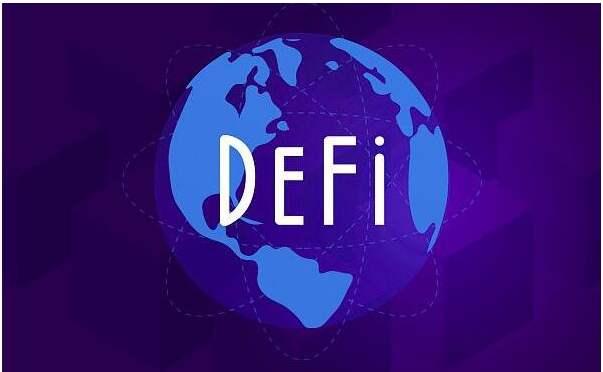Aave V3 is officially launched, showcasing four major new features
Compiled by: The Way of DeFi, Kyle
*Article Author: *Aave**
On January 27, the DeFi lending protocol Aave announced that its V3 version has been deployed on the Ethereum mainnet. The Ethereum network is the first and largest market where Aave has been deployed. V3 is the most significant upgrade to the Aave protocol to date, resulting from the Aave community's relentless pursuit of security, capital efficiency, and risk management.
V3 was first deployed in March 2022 across six networks, including Polygon, Avalanche, Arbitrum, and Optimism. After testing on these networks, Aave Governance voted this week to deploy V3 on the Ethereum mainnet.
What is Aave V3?
Aave V2 was launched in December 2020 based on its predecessor V1. The exponential growth of the DeFi ecosystem prompted the Aave team to focus on Aave V3, introducing significant new risk mitigation features and improving capital efficiency. In just over two years since its launch, the Aave protocol has approximately $6.5 billion in TVL across Aave V2 and V3 markets (as of January 27, 2023).
The design of V3 adopts a flexible architecture to enhance composability, enabling the construction of various innovative features on top of the protocol, such as new risk management tools that provide additional security and stability. Examples include supply and borrowing caps, as well as risk and listing administrators. Aave V3 also improves capital efficiency and decentralized liquidity while reducing gas fees by 25%.
1. Efficient Mode
This mode, also known as "E-Mode," allows users to achieve higher borrowing capacity when the collateral provided by users is related to the assets they deposit and currently borrow, maximizing the use of collateral and improving capital efficiency.

E-Mode comes into play when the volatility of the supplied asset and the borrowed asset is related, especially when both assets belong to the same category, such as stablecoins pegged to the US dollar. Let's look at an example:
If a user supplies staked ETH (stETH) and wants to borrow ETH, since they are the same asset, the volatility is related. In Aave V2, the user's current borrowing rate is 82.5%. In V3, the user can access E-Mode, allowing them to have a borrowing capacity of up to 97% when the assets are linked.
2. Isolation Mode
In this mode, the listed assets are isolated from the liquidity of the main assets. Assets can be provided as collateral solely for borrowing stablecoins, unlocking the listing of lower liquidity assets without affecting the main market. Liquidity risk can be isolated, as the isolation mode allows for more assets to be listed as collateral on Aave while maintaining the security of the protocol.

Borrowers providing isolated assets as collateral cannot offer other assets as collateral (though they can still supply for yield). Borrowers using isolated collateral can only borrow stablecoins permitted by Aave Governance in the isolation mode, up to a specified debt ceiling.
3. Gas Optimization
The gas costs for all features have been reduced by approximately 25%! The upgrade of the protocol has brought significant logical improvements, making the code more readable, modular, and optimized. Additionally, it introduces a new simplified version of the flashLoan feature, allowing users to borrow a single asset at minimal gas costs. This optimization ultimately benefits users, allowing for lower-cost interactions with the Aave protocol.

For more detailed information about Aave V3 features, please read the technical paper or the developer documentation. You can find the list of Aave Ethereum V3 addresses here.
4. V3 Migration Tool
If you want to move your assets from Aave V2 to Aave V3, you can now use the V3 migration tool!
This migration tool helps and guides you to migrate your positions from V2 to V3 in one transaction through the V2 dashboard.
All you need to do is:
a. Select the supplies and borrows you want to migrate
b. Click "Preview Transaction and Migrate"
c. Sign the transaction approvals for each position *
d. Submit the migration transaction
If you have open positions, the migration tool will notify you of the new health factor on both V2 and V3. Please note this new health factor to mitigate liquidation risk.
Each supply position requires contract approval for migrating aTokens, and each borrowing position requires credit delegation approval for the migration contract to execute borrowing on your behalf in V3. Both approvals can be executed through signed messages or approval transactions.
Complex operations on the Ethereum blockchain can be costly. If you have a large amount of borrowed and supplied assets in V2 on the mainnet, you can migrate in batches. However, it is recommended to migrate no more than 5 assets in a single migration transaction.
If you prefer not to, you do not need to migrate your V2 assets. The V2 contracts will always be running and will remain accessible in the future.
The migration tool combines credit delegation and flash loans to migrate positions. The tool takes the user-provided assets, borrowing positions, amounts, and debt types from Aave V2. Using flash loans and credit delegation, it repays the debt on V2 and borrows the same positions and amounts on V3 on behalf of the user, leaving the user's debt on V3.









